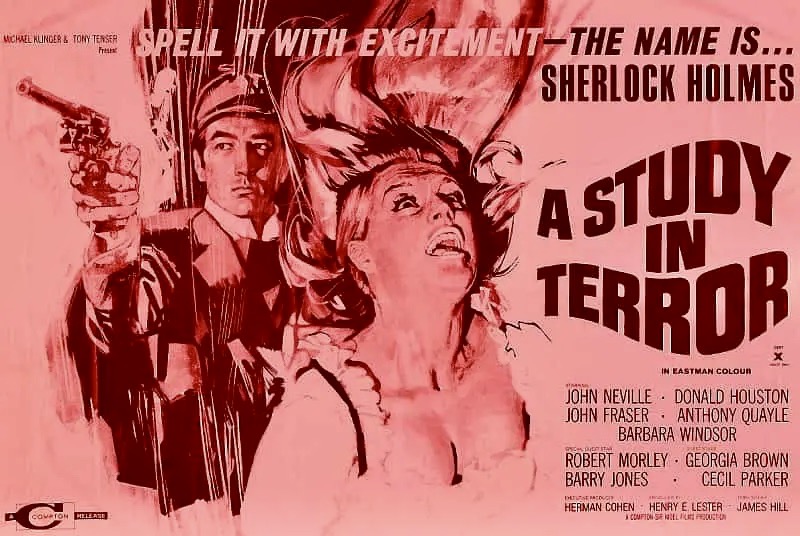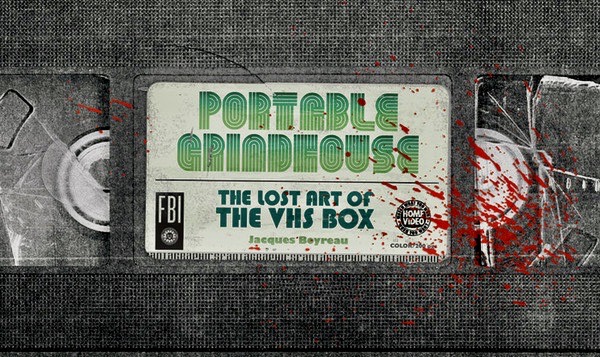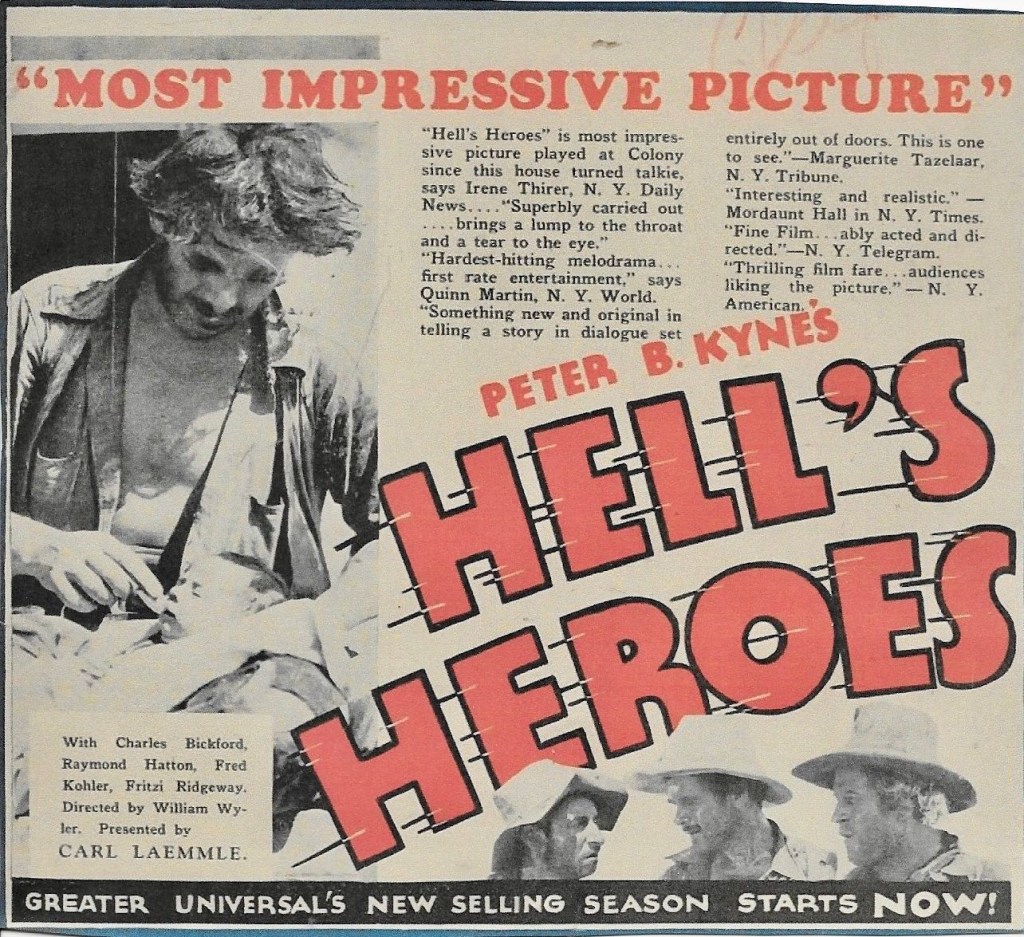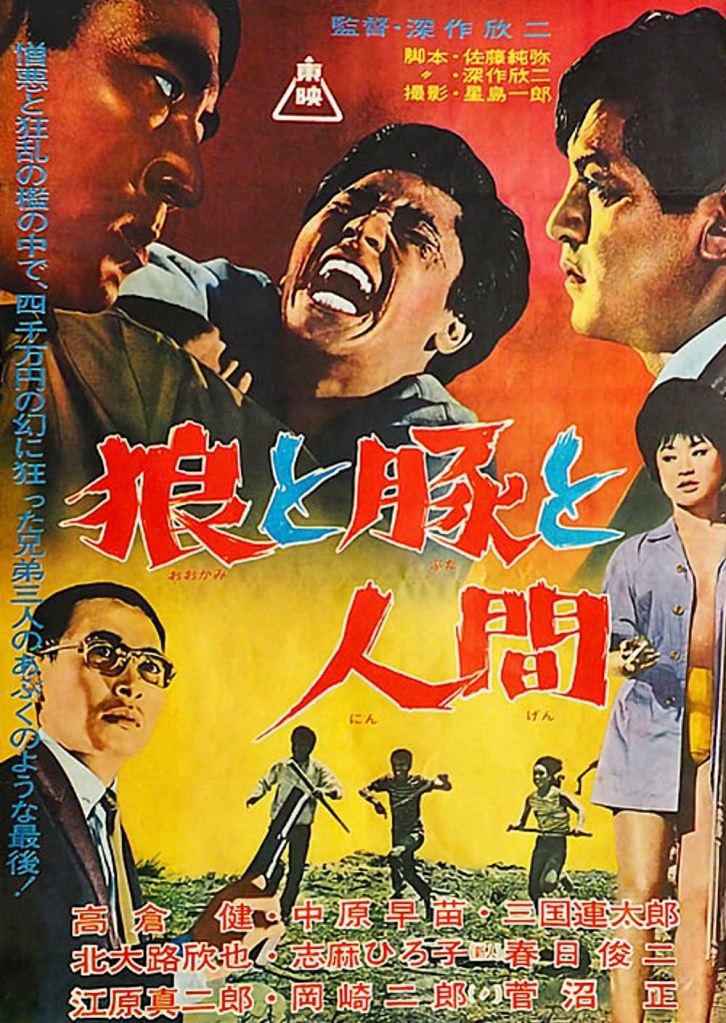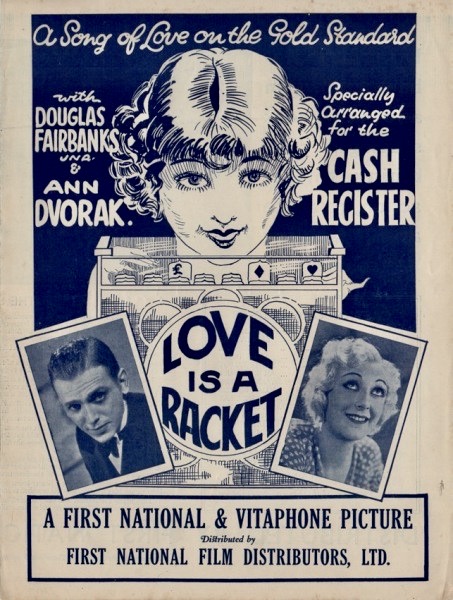It seems surprising that Sir Author Conan Doyle’s most famous creation, Sherlock Holmes, and London’s most famous serial killer who stalked the Whitechapel neighborhood in 1888, were never brought together for one of Doyle’s novels. But the two were pitted against each other on screen for the first time in A Study in Terror (1966) and it’s one of the most underrated but entertaining entries among the Holmes-on-film mysteries created since the days of the Universal Basil Rathbone-Nigel Bruce series.
Continue readingGeorgia on My Mind

Svaneti is not a planet in the solar system or some alternate universe out of a science fiction fantasy but it might as well be. In truth, it is a remote region located in the northwestern part of the Republic of Georgia on the southern slopes of the Caucasus Mountain range. For centuries the area was cut off from civilization due to its inaccessible location in the mountains plus the extreme weather, that usually included eight straight months of snowfall, also made it unwelcoming. After Georgia was invaded and annexed by the Soviet Union in 1922, the region was subjected to Stalin’s five-year plan (1928-1932), which was created to spawn agriculture collectives across the nation and introduce large-scale industrialization. But Svaneti was so isolated from the rest of the world that it took a while for Soviet workers to reach the area and Jim Shvante (Marili svanets) [English title: Salt for Svanetia (1930)] is a portrait of the lives and traditions of the Ushkul tribe in that inhospitable domain before the Soviets arrived to develop it. The result is not a typical documentary but more of a folk culture microcosm as captured by some wildly creative ethnographic filmmaker.
Continue readingPortable Grindhouse: The Lost Art of the VHS Box
Fantagraphics Books, which was founded in 1976 by Gary Groth and Michael Catron, has always been one of the most creative and unique publishers of graphic novels, manga, comic strip anthologies and alternative comics like the Hernandez brothers’ Love and Rockets and Jay Disbrow’s The Flames of Gyro. The focus of the company has always been comics and graphic art but occasionally a one-of-a-kind anomaly will pop up in their release schedule such as Portable Grindhouse: The Lost Art of the VHS Box by Jacques Boyreau, which first appeared in their Fall 2009 catalog. With its oversized VHS box design complete with slipcase and fetishized detail, right down to the FBI warning and reminder to “Keep out of direct sunlight,” Portable Grindhouse is a must-have collectible for any movie buff.
Continue readingThree Men and a Baby
Moviegoers often complain about the Hollywood practice of remaking a film that was popular the first time around so why make it again. The answer is obvious. A good story is worth retelling again and again and author Peter B. Kyne is one of those writers whose various novels and stories have been adapted to the screen more than 100 times, especially during the silent and early sound era. Many of these works were also adapted by screenwriters without his consent or any compensation from the studios but most film buffs will recognize his most popular creation, which was a 1913 novella entitled Three Godfathers (It first appeared in The Saturday Evening Post in November 1912). D.W. Griffith made a short silent version of it in 1913 with Harry Carey called The Sheriff’s Baby. There was a Universal silent version in 1916 which also starred Harry Carey, then a remake directed by John Ford in 1920 called Marked Men, and yet another remake by Ford in color and starring John Wayne in 1948 entitled 3 Godfathers. Other adaptations include a made-for-TV version entitled The Godson in 1974 and even a 2003 Japanese anime called Tokyo Godfathers from director Satoshi Kon as a homage to the original story. But one version that is often overlooked is Hell’s Heroes (1929) directed by William Wyler.
Continue readingFashion in the Nuclear Age
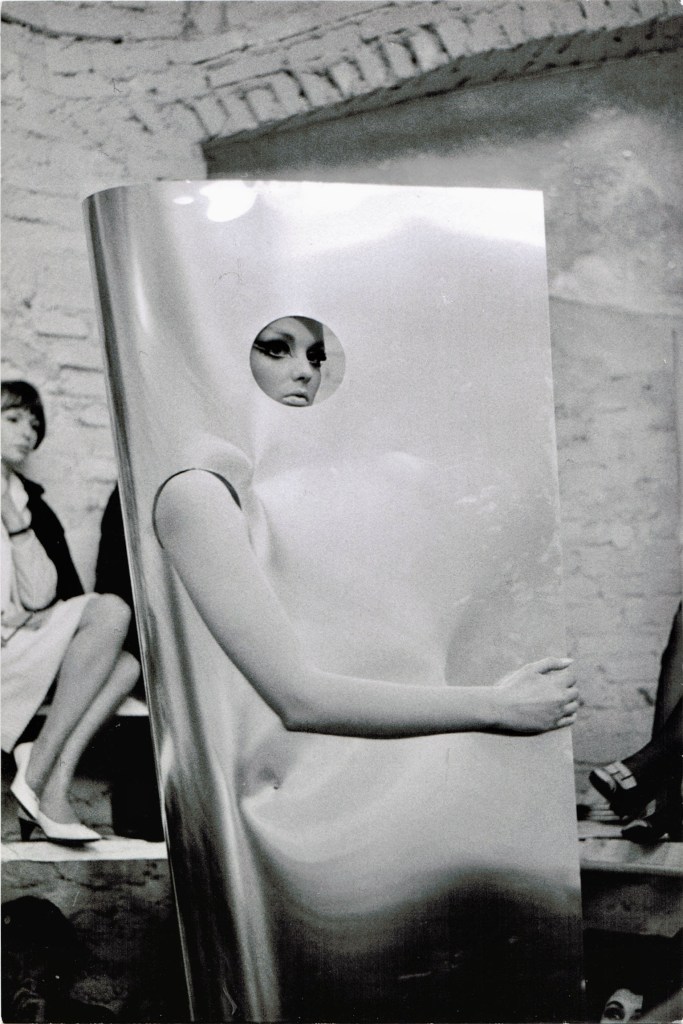
The fashion industry has always been fair game as a target for satirists but the majority of movies about the fashion world have mostly been glamorizations of it (Funny Face, The Devil Wore Prada) or serious validations of the business like the 1995 documentary Unzipped featuring designer Isaac Mizrahi or The September Issue (2007), which focuses on Anna Wintour, editor-in-chief of Vogue. It is much harder to come up with memorable satires on the subject although the supremely silly Zoolander (2001) is fun and Robert Altman’s Ready to Wear aka Pret-a-Porter (1994) is an amusing minor trifle. One of the few exceptions is Qui Etes-Vous, Polly Maggoo? (English title: Who Are You, Polly Maggoo?, 1966), the feature film debut of renowned photographer William Klein, which brilliantly skewers the profession while dazzling you with its visual inventiveness and giddy high spirits.
Continue readingThe Stiletto Club
Conspiracy thrillers have been a popular subgenre in movies ever since the silent era with such memorable entries as The Ace of Hearts (1921) in which Lon Chaney stars as a member of a secret society that gets rid of people deemed unfit to live among them. Alfred Hitchcock’s The 39 Steps (1935) is an equally menacing early talkie classic and The Manchurian Candidate (1962), about a brainwashed ex-military hero being controlled by political subversives, is probably the best-known representative of all. However, it wasn’t until the 1970s that conspiracy thrillers reached an all-time high in popularity as witnessed by such iconic Hollywood releases as The Parallax View (1974), The Conversation (1974), Three Days of the Condor (1975), Capricorn One (1977) and The Boys from Brazil (1978). Other countries contributed their own variations on the genre like Spain, which released La Casa sin Fronteras (English title: The House Without Frontiers), a deeply unsettling effort from director Pedro Olea, which was made while General Franco was still in power and which prefigures the paranoid scenarios made popular by The Parallax View and others.
Continue readingThe Rashomon Moment: Bob Dylan at the 1965 Newport Folk Festival

In the winter of 2007 moviegoers were given a choice to see numerous impersonations of the artist known as Bob Dylan in a semi-experimental biopic or experience the living legend in concert at the Newport Folk Festival circa 1963. The former was Todd Haynes’s I’m Not There featuring several faux-Dylans portrayed by Heath Ledger, Christian Bale, Cate Blanchett, Richard Gere and others in a dramatic attempt to capture the many phases and contradictions in the musician’s life. The latter was Murray Lerner’s riveting time capsule, The Other Side of the Mirror: Bob Dylan Live at the Newport Folk Festival, 1963-1965. The strange thing is that Lerner’s documentary featuring the real deal vanished after a brief theatrical run while Haynes’s film continues to enjoy wide exposure thanks to its release on DVD. I don’t know if this meant that the younger movie-going audience is more interested in popular actors playing Bob Dylan or that they have little interest in the sixties folk music scene that Dylan revitalized with his spectacular entry into it.
Continue readingPlaying the Odds
During his years as a contract director at Warner Bros., William Wellman made his mark early with the influential gangster drama The Public Enemy (1931) but didn’t have another major box office success until after he left the studio and directed A Star Is Born (1937), produced by David O. Selznick and distributed by United Artists. Yet, during his tenure with First National Pictures/Warner Bros., Wellman churned out a number of energetic, fast-paced entertainments which are often overlooked by admirers of his work but stand out from the assembly-line programmers they were intended to be. Among the highlights from this early period are Night Nurse (1931) with Barbara Stanwyck, the grim Pre-Code drama Safe in Hell (1931) and Love Is a Racket (1932) starring Douglas Fairbanks, Jr. as a newspaper columnist working the Broadway beat. The latter film is not only a fascinating time capsule of its era, with glimpses of then-popular New York City nightspots such as Sardi’s, but also presents an unapologetic, cynical view of reporters who often resort to any means necessary to score a front-page story.
Continue readingBreak Up the Dance and Other Film Shorts from Poland
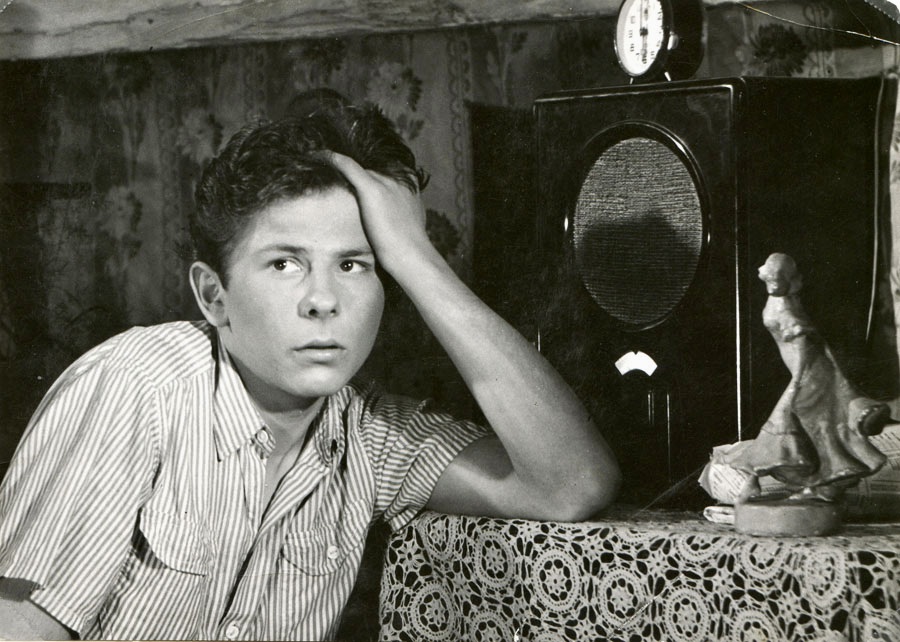
At an early age Roman Polanski began to realize his true ambition to be a filmmaker with a series of short films which were made during his time as a student at Poland’s prestigious National Film School at Lodz. His debut film Morderstwo [English title, Murder aka The Crime, 1957] – a three minute short without dialogue about a senseless murder – and the one that followed it, the three-minute Usmiech Zebiczny [English title: Teeth Smile aka A Toothful Smile, 1957], about a peeping tom, were atmospheric studies in violence and voyeurism that disturbed his fellow filmmakers and raised speculations about the young filmmaker’s dark side. His third short, Rozbijemy Zabawe… [English title: Break Up the Party, 1957], however, aroused considerably more controversy over his directorial methods.
Continue reading
